Confronting the Modern Era
New Ways to Shop
During the late 1800s and the early 1900s, Tennesseans had more opportunities to purchase new products. There was increased prosperity , so many Tennesseans could now afford to buy more goods.
Advertisements crowded newspapers for products and services such as electric appliances, family entertainment, and women’s clothing. In Nashville residents could shop at the Arcade or downtown department stores.
Although most Tennesseans still resided in rural areas during this period, developments affected them as well. Better roads enabled many to travel to cities and towns more easily. So they too could enjoy shopping and entertainment available in the cities.
Mail Order Catalogs
Although some mail order catalogs were sent out before the Civil War, Montgomery Ward & Company in Chicago became the first large mail order company in the 1870s.
Sears, Roebuck & Co. quickly followed their lead, and had even greater success. By 1905 Sear's mail order sales were nearly $50 million. To many Americans, especially those who did not live near cities, mail order catalogs became a cultural document. Readers could keep up with fashion trends and new products. And, much like today, they could fantasize about what they would like to purchase if they ever had enough money.
Laws mandating free rural delivery in 1898 and parcel post deliveries in 1913 kept the mail order business growing. Rural customers also found another use for mail order catalogs. They were often kept in outhouses so they could be read and then used as toilet tissue.
Piggly Wiggly Grocery Store
The Piggly Wiggly store in Memphis was the country’s first self service grocery store. It was founded by owner Clarence Saunders in 1916.
Before this, people would go to the food store and present a list to clerks who would retrieve the items from the shelves, usually located on the sides of the store or in the back. Customers would wait in line to receive their groceries.
Before this, people would go to the food store and present a list to clerks who would retrieve the items from the shelves, usually located on the sides of the store or in the back. Customers would wait in line to receive their groceries.
Saunders decided that this method was a waste of time. He came up with the idea of shelves of food placed so that customers could serve themselves. They then would go through a checkout line to pay for the food. This idea was so revolutionary that Saunders would patent his idea in 1917. Today all grocery stores operate this way.
Department Stores
Department stores first appeared in the United States in 1862 in New York City. Before this items were sold in specialty stores. The department store brought many different types of products together in one building.
Before there were color movies and color photographs in magazines, department stores were the only way people could see potential purchases in color. The stores had mannequins with clothing and accessories.
The stores also had displays showing arrangements of furniture for different rooms. This was a new idea for many people who were not rich—that you would decorate or arrange your house in a pleasing manner. Department stores held demonstrations of appliances, fashion shows, and lectures.
Lowenstein’s in Memphis started out as a wholesale dry goods store. It became a department store in the late 1800s. Goldsmith’s opened its large store in downtown Memphis in 1895. In Nashville, Castner-Knott opened in 1900 while Cain Sloan Company opened in 1903. Both stores were located in the downtown area.
One of the most successful variety stores was the S.H. Kress & Co., which had stores in Memphis and Nashville. Variety stores, also called five-and-dime stores, were first opened in the late 1800s. They offered smaller, quality items at a low price. These stores were very popular with shoppers.
Picture Credits:
- Photograph showing the entrance to a Piggly Wiggly grocery store. This photo was taken in 1917 in Memphis. It shows a turnstile, small shopping baskets, and a check-out counter. Library of Congress.
- Photograph showing shelves inside a Piggly Wiggly grocery store. This photo was taken in 1917 in Memphis. It shows numerous goods for customers at the self service grocery store. Library of Congress.
- Photograph of a grocery store. This photo was taken some time between 1911–1930 in Cookeville, Tennessee. It shows the store shelves filled with goods behind the counters. Two men and a woman, who is standing behind a counter, are also shown. Tennessee Technological University.
- Photograph of Marshall’s Store. This photo was taken in Campbell Station, Tennessee. It shows two men, a woman, and a boy standing on the store porch. Another man is also shown nearby riding a horse. Tennessee State Library and Archives.
- Photograph showing a general store. This photo was taken in 1910 in Springfield, Tennessee. It shows two employees standing behind the counters. Customers would ask the clerks for the items they wanted to buy. Tennessee State Library and Archives.
- Photograph showing the J. A. Sanders Grocery delivery wagon. This photo was taken in 1900 in Chattanooga, Tennessee. It shows a man standing by the wagon and four children posing nearby. Chattanooga-Hamilton County Bicentennial Library.
- Photograph of Kris Keener’s shoe store. This photo was taken in 1920 in Blount County, Tennessee. It shows store shelves filled with shoe boxes. A salesman is shown helping two women try on shows while two others wait. Blount County Public Library.
Confronting the Modern Era >> Life in Tennessee >> How They Lived >> New Ways to Shop
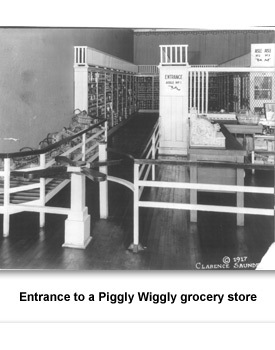
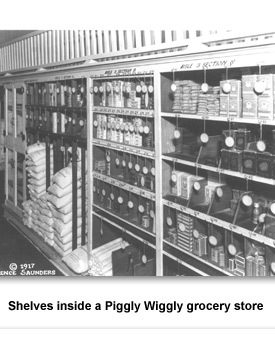
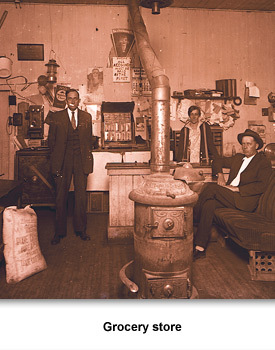
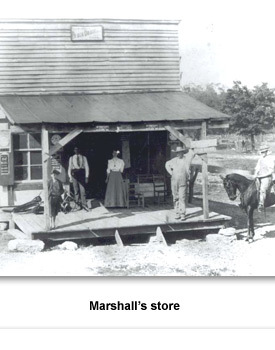
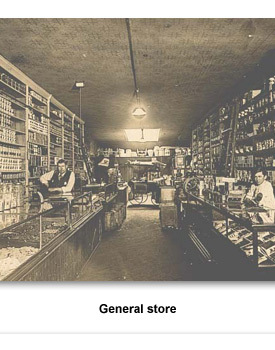
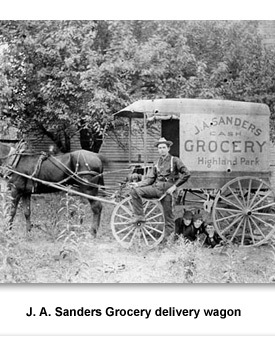
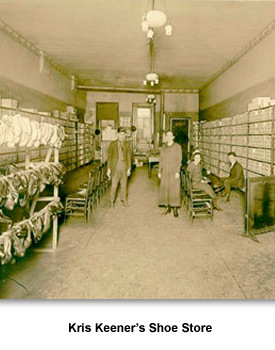
 Sponsored by: National Endowment for the Humanities
Sponsored by: National Endowment for the Humanities